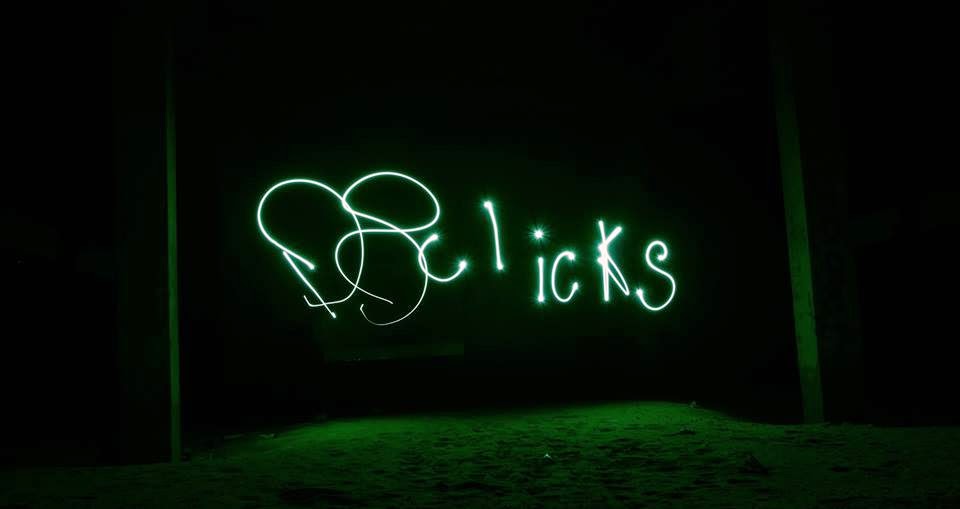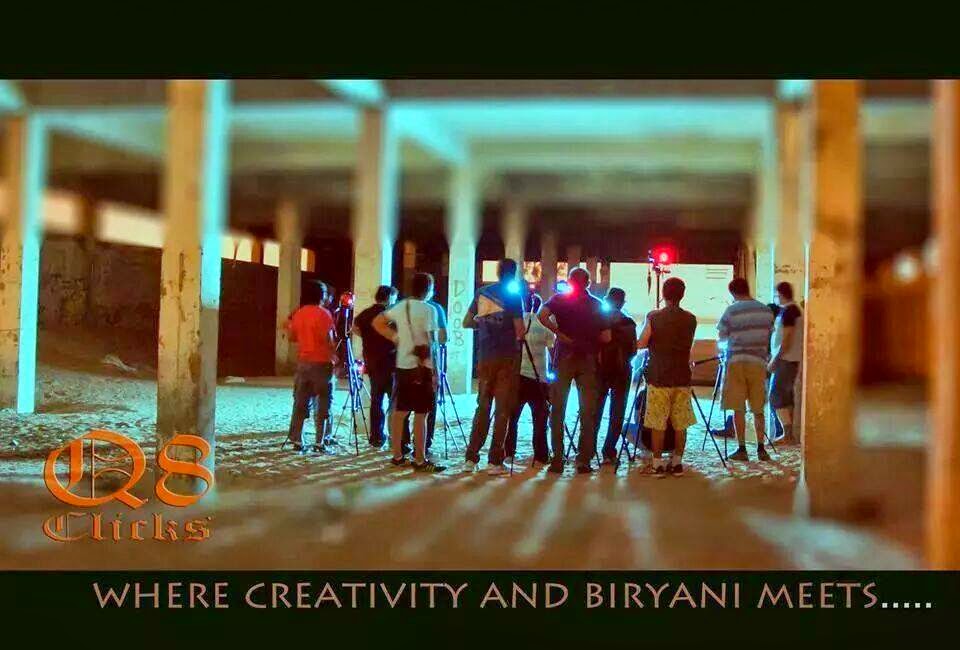Milky way trip with Q8clicks

It was a dream for me to shoot milkyway from a long time, however I am not lucky enough to find a good schedule to do so. And so when Q8clicks planned a milky way night last month, I grabbed the chance and made sure I won't miss it. We planned to go for a long ride towards the border to reach a dark area away from the city. And for a good milky way shoot, we decided to have the event in Abdally near Iraq boarder in an old weather station in 70's. I have been in this place for star trail for several time, so finding the location even in the dark is not that difficult. Around 20 people gathered that night to capture star trail & milky way. An unexpected light painting show was also presented by my good friend Manoj for everyone. The night was full of fun and has definitely tighten the bond of friendship among the members who gathered on that night.
Below are some keys to capture a good milky way image;
Find a dark sky.
Just waiting until nighttime won’t do. A dark sky free of light
pollution is the first and most important requirement to even seeing
the Milky Way, let alone photographing it. Be prepared to travel a
considerable distance, otherwise you run the risk of city lights making
their mark in your shots. The moon can have a similar impact on your Milky
Way photos; shooting during a full moon will wash out your images. Try to
shoot during a new moon.
Know when and where to look. The part of the Milky Way that is most easily visible to the naked eye isn’t visible all year round. You will find your celestial subject in the southern half of the sky, rising from the west. there are several mobile apps available to locate milky way. install and wait for the moment...!!!
Use a digital camera with good high ISO capabilities.
You’ll be shooting at night with very little available
light; you want your camera’s sensor to be able to handle the shooting
conditions without introducing an excessive amount of noise. A full-frame
camera is preferable but certainly not a necessity.
 |
| 25 sec. exposure ISO3200 f4.5- used gorilla pod for the ground angle |
Use a fast wide angle lens.
You should work with a lens with a maximum aperture of at least f/2.8; the faster the better. It’s not that you’re totally out of luck if your fastest lens is f/3.5 or so, but you’ll have more of a challenge on your hands since the lens won’t be able to gather as much light. The same principle applies to focal length; go as wide as you can. You may be seeing only a fraction of the Milky Way, but it’s still monstrous in size. The wider your lens, the more of it you can capture.
You should work with a lens with a maximum aperture of at least f/2.8; the faster the better. It’s not that you’re totally out of luck if your fastest lens is f/3.5 or so, but you’ll have more of a challenge on your hands since the lens won’t be able to gather as much light. The same principle applies to focal length; go as wide as you can. You may be seeing only a fraction of the Milky Way, but it’s still monstrous in size. The wider your lens, the more of it you can capture.
Use a tripod.
This
really isn’t optional, but sturdiness is your
number one concern.as you shoot in very slow shutter speed.
 |
| The Fire Dancer Manoj! - 25 sec. exposure ISO3200 f4.5- used gorilla pod for the ground angle |
To
avoid the headache of trying to focus in the dark, use your camera’s live
view feature to manually focus on a bright star. Alternatively, you could
use the distance markings on your lens (if it has them) to set hyper focal
distance, you can set a bit turn from the infinity.
Start with ISO 3200. Referring back to the first point, a high ISO is essential to collecting enough light to render a bright image of the Milky Way. Under typical conditions, ISO 3200 is a good starting place. Based on how well this plays with other camera settings, you can go higher or lower from there, the images i shoot shown above all are with ISO 3200.
Start with ISO 3200. Referring back to the first point, a high ISO is essential to collecting enough light to render a bright image of the Milky Way. Under typical conditions, ISO 3200 is a good starting place. Based on how well this plays with other camera settings, you can go higher or lower from there, the images i shoot shown above all are with ISO 3200.
Set a long shutter speed.
This is how you will capture more light and create a
sufficiently bright exposure. There just one problem, though. The planet
doesn’t care if you’re new at astro photography; it’s going to keep on
rotating, which means if you leave the shutter open for too long, you’ll
end up with star trails. There’s nothing wrong with star trails when
that’s what you’re aiming for, but they aren’t really desirable for
photographing the Milky Way. To get pinpoint stars, use the “500 rule,”
which calls for you to divide 500 by the focal length of the lens you’re
using. So, if you have a 24mm lens on a full-frame camera, you will set
your shutter speed to 20 sec. (500/24 = 20.83). If you’re working with a
crop sensor camera be sure to account for the crop factor (typically 1.5
for Nikon and Sony, 1.6 for Canon). As an example, using the same 24mm
lens on a Nikon crop, you’d end up with an effective focal length of 36mm
(24×1.5 = 36). Applying the 500 rule will yield a shutter speed of 13 sec.
(500/36 = 13.89). There are those who debate about whether to use the 500
rule or the similar 600 rule; without delving further into the mathematics
of it all, it really is more a matter of visual perception. In short,
stick with the 500 rule, especially if you intend to make poster size
prints. If, after you’ve gotten more comfortable and done some
experimenting, you find the “600 rule” works better for you (should be
find for web images) then definitely go with that.(info from Google :P i tried and its good.)
Set a wide open aperture.
Remember, it’s all about collecting as much light as
possible; depth of field isn’t the primary concern here. In case of any
significant softness you’ll want to stop your lens down. This is why it’s
so important to use a fast lens in the first place; if you know your lens
is unacceptably soft at f/1.4, stopping down to f/2 will sharpen things up
without having a severe impact on the lens’ light gathering ability.
Compose your shot.
There’s
no right way or wrong way to compose your shot, but you can create a sense
of depth by framing this as a standard landscape shot with the Milky Way
serving as the background. Just because it’s dark out doesn’t mean you
should forget about the foreground, though; you can add interest to your
scene by including hills or mountains, trees, rock formations, or even a
person. Experiment all you want.
 |
| Manoj |
It’s very likely that your first shot won’t be an
exposure you’re satisfied with (if you’re not happy with the focus or
composition, adjust those things before moving on to worrying about
exposure). If the exposure isn’t “right,” you’ll have to identify the
problem and work from there. If there’s too much noise, simply decrease
the ISO. If the shot is overexposed, check your surroundings for light
pollution; decrease shutter speed; stop down the lens; or decrease ISO. If
it’s underexposed, make sure you’re using the widest aperture on your
lens; increase shutter speed (but beware of star trails forming); increase
ISO. (I prefer setting the ISO to 3200. I believe it is a safe point with shutter speed from 15 sec on a crop frame and 20-25 sec on full frame. Below is the result of using a 25sec exposure on canon 5d mkIII with an aperture of F4.5) Thanks to unni for the lens. I am a man with full frame camera but with no lens :P
 |
| 25sec exposure f4.5, ISO 3200 @28mm |
There
will be a lot of variation at this final stage and, again, there is no one
right way to handle the post processing of your shots. The two most
important things you can do to make post processing a little easier is to
shoot raw and get the best exposure you can in-camera. You may need to
apply some sharpness and noise reduction.
According to some sources, the color temperature of the Milky Way is around 4840°K; if you find it too much on the yellow/orange side, adjust white balance until you have a neutral scene. You will definitely need to increase contrast; it’s okay to be a bit heavy handed here, so long as you’re not losing shadow detail. If the photo editing software you are using allows curves adjustments, make use of it, as you can be more precise with your work. Assuming you got a good in-camera exposure you shouldn’t have to play with the exposure slider too much.
As you can see, you don’t need a lot of specialized equipment in order to be successful in astrophotography. In addition to having a passion for the subject, you’ll certainly only have to invest a lot of planning, practice, and patience. The pay-off, however, will be worth all the time and effort you spend. happy shooting :P :P :P .. cheers...!!!
My images are not good enough to publish.. but i am happy I have spent the night with my friends. Love live Q8clicks!
Some of the funny photos taken that night;


Special thanks goes out to Unni for the Biryani and Jobin for the Gulab Jamun :P and the other guys who all bring the refreshments...!!! I am looking forward seeing you all again next time!

3 comments:
Great shots Shafi!
A great guide and awesome shots Shafi!!! Thanks to all Q8 Clicks members for the opportunity to be a part of it!!
Great! very informative now i got some ideas about the rules,before iam not much aware about these rules ,i read it lot of times ,now igot what it means & what the main effects in types cameras thank u Shafi ,i found my had this much glamour .
Post a Comment